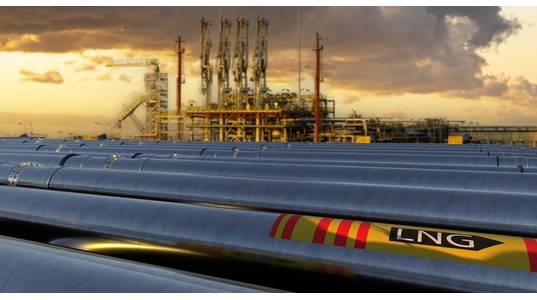
The likelihood of industrial action at three Australian liquefied natural gas facilities is increasing, but the question for the market is what is the potential impact on the supply of the super-chilled fuel.
Unions at Woodside Energy Group's North West Shelf offshore gas platforms announced plans on Aug. 20 to strike as early as Sept. 2, the latest escalation in a long-running dispute over pay and conditions.
The Offshore Alliance, which consists of two key unions, will also finalize a strike vote at the Chevron-operated Wheatstone and Gorgon LNG ventures by Aug. 24.
It's likely that workers at the Chevron plants will join their Woodside colleagues in authorizing industrial action, which could then be launched with a seven-day notice period.
The three LNG plants are located in Western Australia state and combined produce about 10% of the world's supply of the fuel, used in Asia and Europe to generate electricity as well as for industrial purposes.
The worst-case scenario is that industrial action is prolonged and forces a total shutdown of the three plants.
But this is also the least likely outcome as it doesn't suit the aims of any of the parties, namely workers, the LNG producers and the overseas buyers.
Sources at the two LNG companies, speaking on condition of anonymity, believe some form of industrial action is likely in coming weeks, as this is how such disputes have played out in the past.
In effect, the unions and the companies are engaging in a balancing act, with the labour representatives wanting to inflict enough pain on the companies that it becomes more cost-effective to meet their demands.
At the same time, they don't want to cause too much financial loss, or disrupt too many cargoes, as this has longer-term implications for investment, and therefore future jobs, as well as impinging the reputation of Australia as a reliable LNG supplier and partner.
For their part, the companies don't want to be seen to be caving too easily to union demands, but ultimately don't want to have to declare force majeure on LNG shipments.
The most likely outcome for the time being remains limited industrial action, ongoing negotiations and an eventual settlement that sees the unions get some of what they want, most likely in exchange for some longer-term guarantees.
However, the above scenario rests on all parties eventually adopting a mature approach to the dispute, and there are obviously risks that calmer heads don't win the day.
It's these risks that are helping increase the spot price of LNG, with cargoes for delivery to North Asia LNG-AS rising last week to the highest in five months.
The spot price was assessed at $14 per million British thermal units (mmBtu), the most since the week to March 3, and also up 55.5% from the low so far this year of $9, reached in early June.
There is also some fundamental support for LNG prices, with signs that demand in Asia, the top-importing region, is starting to accelerate ahead of the northern winter.
Asia Imports Rising
Asia's imports for August are expected to lift to 22.86 million metric tons, according to data compiled by commodity analysts Kpler.
This would be up from 21.61 million metric tons in July and would be the strongest month since January's 23.37 million.
The increase in demand is being largely driven by Japan and South Korea, which rank top and third among LNG importers, as they seek to fill storages ahead of the winter demand peak.
Japan is on track to imports 5.56 million metric tons of LNG in August, up from 5.09 million in July and the most since February, while South Korea's arrivals are pegged at 3.64 million in August, the highest since March.
While Asia's LNG demand is picking up, Europe's is continuing to slip, with August imports estimated by Kpler at 8.20 million metric tons, down from 8.78 million in July and the weakest since November 2021.
Europe's natural gas storages are at high levels for this time of year and the continent has also had success in structurally lowering gas demand in the wake of curtailed pipeline supplies from Russia following Moscow's invasion of Ukraine in February last year.
The opinions expressed here are those of the author, a columnist for Reuters.
(Reuters; Editing by Shri Navaratnam)



